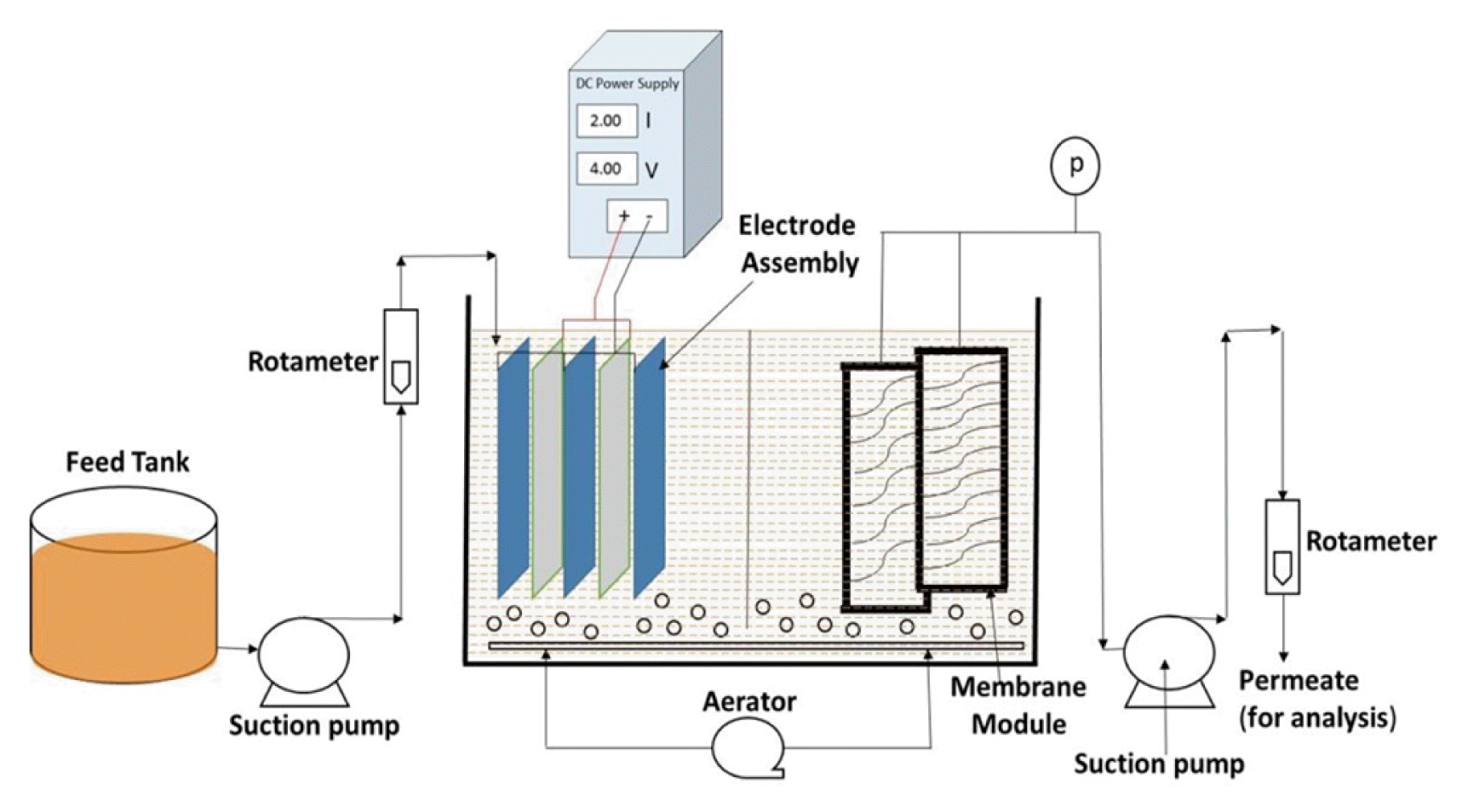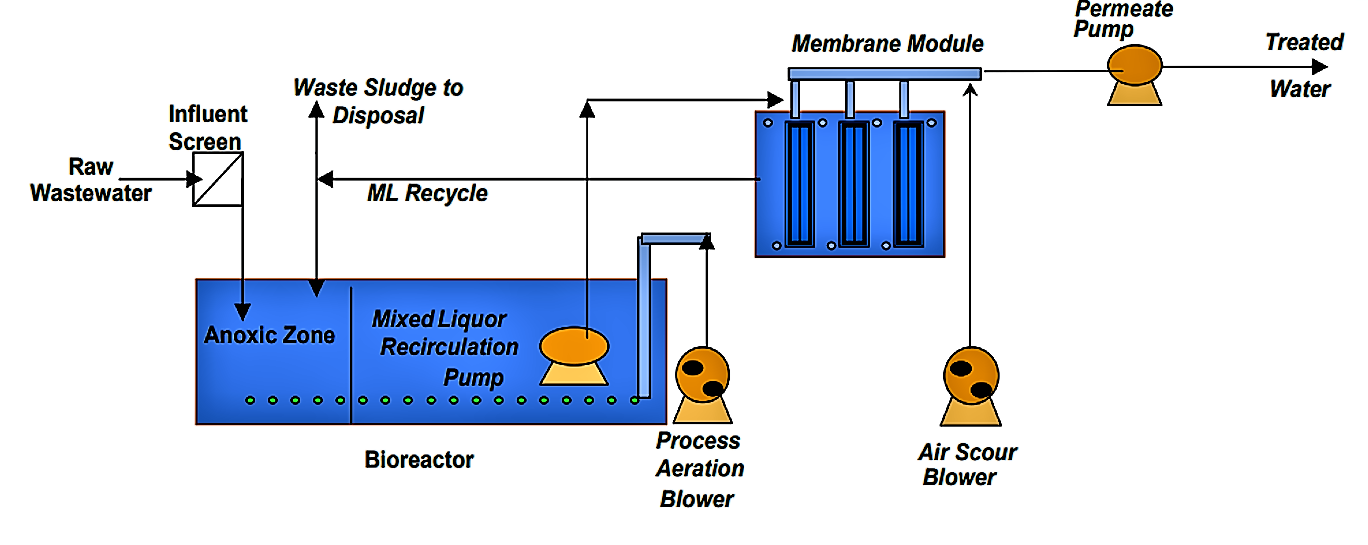Membrane Bioreactor vs. Traditional Treatment Methods: Key Differences Explained
Membrane Bioreactor vs. Traditional Treatment Methods: Key Differences Explained
Blog Article
Membrane Bioreactors Explained: Effective Solutions for Clean Water
Membrane layer bioreactors (MBRs) have arised as an advanced service for attending to the pushing challenges of wastewater therapy - Membrane Bioreactor. By incorporating organic procedures with advanced membrane filtration, MBRs not just boost the high quality of cured water however additionally decrease the spatial needs of treatment centers.

What Are Membrane Layer Bioreactors?
Membrane layer bioreactors (MBRs) are innovative wastewater therapy systems that combine biological destruction procedures with membrane layer filtering modern technology. This combination enables the reliable elimination of contaminants from water, making MBRs a recommended option in various applications, consisting of local wastewater therapy and industrial effluent monitoring.

Among the vital advantages of MBRs is their capacity to generate top notch effluent, often ideal for reuse in watering or industrial procedures. In addition, MBRs call for a smaller sized impact contrasted to standard therapy systems, making them optimal for metropolitan settings where area may be limited.
Furthermore, MBRs can effectively take care of differing influent loads and are much less prone to the results of poisonous shocks. These features add to their expanding popularity as a lasting service for resolving the increasing demand for clean water while reducing environmental impacts.
Just How Membrane Layer Bioreactors Work
While the procedure of membrane layer bioreactors (MBRs) might appear complex, it essentially focuses on the harmony between organic processes and membrane purification. MBRs integrate a biological therapy procedure, normally turned on sludge, with a membrane layer separation unit to deal with wastewater effectively.
In an MBR system, wastewater is initial introduced right into a bioreactor where microorganisms break down organic matter and various other contaminants. The biological task reduces the focus of toxins while promoting the development of biomass. Following this organic therapy, the blended liquor undergoes membrane purification, which can be microfiltration or ultrafiltration, relying on the wanted effluent quality.
The membrane layers work as a physical obstacle, allowing water and little solutes to pass while retaining suspended solids and larger molecules. This makes it possible for the system to maintain a high concentration of biomass within the reactor, improving the treatment effectiveness.
Moreover, the continuous splitting up of cured water from the biomass promotes a small design and decreases the footprint of the treatment facility. Overall, the combination of biological degradation and membrane filtration in MBRs causes reliable and dependable wastewater therapy, ensuring premium effluent appropriate for different applications.
Benefits of MBR Innovation
Among the vital advantages of membrane layer bioreactor (MBR) modern technology is its capability to create high-quality effluent with a dramatically reduced footprint contrasted to traditional wastewater therapy techniques. MBR systems properly incorporate organic therapy and membrane layer purification, resulting in superior elimination of impurities, consisting of suspended solids, pathogens, and organic issue. This capability causes effluent that commonly satisfies or surpasses strict governing criteria for reuse and discharge.
Furthermore, MBR modern technology permits for greater biomass focus, which enhances the treatment performance and reduces the required reactor volume. This compact layout is particularly useful in urban locations where space is restricted. The functional flexibility of MBR systems also indicates they can adapt to differing influent top qualities and circulation prices, making them appropriate for a wide array of applications.
In addition, the minimized sludge manufacturing related to MBR procedures adds to reduce functional and upkeep prices. The membranes act as a physical barrier, minimizing the risk of obstructing and making it possible for longer operational durations between cleaning. In general, the benefits of MBR modern technology make it an appealing solution for lasting wastewater therapy, addressing both ecological problems and the need for reliable source monitoring.
Applications of Membrane Bioreactors
With their adaptability and efficiency, membrane layer bioreactors (MBRs) find applications across numerous sectors, consisting of municipal wastewater treatment, commercial procedures, and even water improvement. In metropolitan settings, MBRs give a compact option for treating wastewater, properly getting rid of contaminants while concurrently creating top quality effluent that fulfills strict governing standards. This makes them specifically ideal for locations with minimal space.
In commercial applications, MBR modern technology is utilized for treating process water, especially in sectors such as food and drink, drugs, and petrochemicals. These markets take advantage of MBRs' ability to deal with high natural lots and their effectiveness in recovering beneficial resources use this link from wastewater, such as nutrients and water.
Additionally, MBRs play an important duty in water recovery initiatives, allowing the reuse of treated wastewater for official source irrigation, commercial processes, or also as drinkable water after further treatment (Membrane Bioreactor). Their efficiency in removing microorganisms and toxins makes them a reputable choice for making certain water top quality in different reuse applications
Future of Water Treatment Solutions
The future of water therapy solutions is poised for transformative improvements driven by technical technology and raising environmental understanding. As international water scarcity becomes a pressing issue, new approaches, including membrane bioreactor (MBR) systems, are established to play a pivotal role in boosting the performance and sustainability of water treatment procedures.
Emerging modern technologies such as artificial knowledge and artificial intelligence are expected to maximize therapy procedures, permitting real-time tracking and anticipating maintenance. This will certainly enhance the overall integrity and performance of water therapy centers. Advancements in membrane layer materials, such as graphene and nanofiltration, promise to increase permeation rates and minimize fouling, leading to reduced power consumption and operational prices.
Additionally, the assimilation of renewable power resources into water treatment plants will contribute to greener methods. The circular economic climate version will likewise gain traction, motivating the recovery of beneficial resources from wastewater, such as nutrients and energy.
Verdict

Membrane layer bioreactors (MBRs) have actually arised as a sophisticated solution for attending to the pressing difficulties of wastewater treatment. By incorporating organic procedures with advanced membrane filtering, MBRs not just improve the quality of treated water however likewise lower the spatial demands of therapy facilities.One of the crucial benefits of membrane bioreactor (MBR) innovation is its ability to create high-quality effluent with a dramatically lowered footprint contrasted to conventional wastewater treatment techniques.With their adaptability and effectiveness, membrane bioreactors (MBRs) locate applications across different markets, including municipal wastewater therapy, commercial procedures, and even water reclamation.In conclusion, membrane bioreactors stand for a important link considerable advancement in wastewater therapy innovation, integrating organic procedures with efficient membrane filtering to create premium effluent.
Report this page